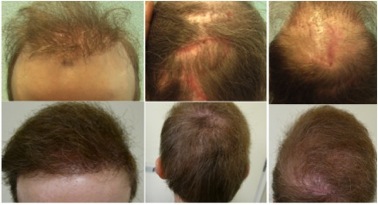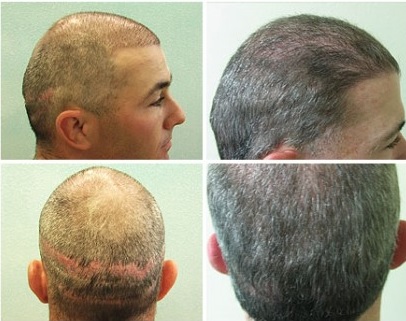What is FUT?
FUT stands for follicular unit transplant. It is a wrong name assignment as FUE is also a follicular unit transplant in a technical sense. A more accurate term is follicular unit strip surgery (FUSS) which clarifies that although follicular units are used, they are derived by the excision of a strip of flesh. This hair transplant technique came about in the 1980’s, with major development in the 1990’s. It is considered the “traditional” method of hair transplant because it is the oldest of the existing techniques and it removes hair from the safe donor zone only.
FUSS is also known as strip harvesting. Procedurally, the surgeon excises a strip of flesh from the mid-rear scalp (the safe donor zone). This strip is dissected into follicular units (grouping of one to four hairs) to be implanted into the recipient area. This method requires stitches or staples to close the wound in the donor area. This method is known for its linear scar and is limited in hairline design due to the texture of hair in its confined donor supply.
What is FUE?
FUE stands for follicular unit extraction. This microsurgical method was also conceived of in the 1980’s but it’s development came largely after the growth of FUT. FUE harvests grafts in individual follicular units, instead of in a strip of flesh. These follicular units are excised with a punch tool anywhere from .8 to 1.2mm in diameter.
There is no need for wound closures with follicular unit extraction, since each wound made is so small. This also abates much of the noticeable scarring. In addition, FUE does widens the scope of viable donor hair. An advanced surgeon might take hair from the nape of the neck to craft a natural-looking, soft hairline. Procedurally, this method takes much longer and tends to cost more than FUT, but can offer superior results.
What is BHT?

BHT stands for body hair transplant. This highly advanced technique is still considered relatively new and is not yet globally practiced. It is derived from FUE, and makes use of donor hair from all over the body, to include the beard, chest, stomach, arms, shoulders, and legs. The purpose of widening the donor pool to such areas is for hair restoration of the severely bald; those who’ve suffered an accident, those whose scalp is depleted and scarred from prior surgeries, or those who have reached an NW 6 or 7 on the scale.
Body hair transplant tends to be a long a laborious procedure, generally requiring several thousand grafts for a complete restoration. Thus, it tends to be more expensive and require an FUE surgeon with unmatched skill. One drawback of body hair transplantation is that the long term graft survival rates are not as high as they are with head hair, though BHT yields typically above 75% as reported by Dr U using his protocols and UGraft system of tools.

